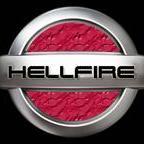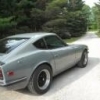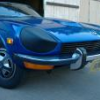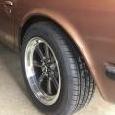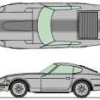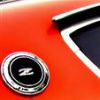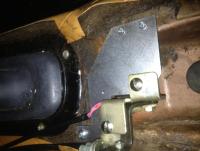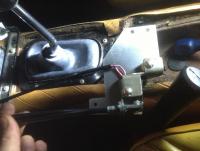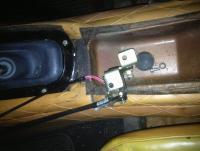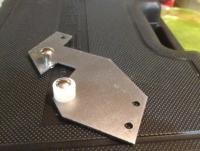Hi everyone! Excellent discussion by all. I think everyone ended up on the same page, but I'll throw in my notes from a quick read through.
1. The 4500 is "arbitrary" in that it just happens to be where the AFM Vane maxes out with a stock Z engine. By maxs out, we mean any more airflow does not move the vane (& the corresponding voltage read by ecu) any appreiable amount.
2. The ECU does not stretch the pulse ANY based on RPM value. Don't confuse this with more fuel delivered with more rpms. That happens because you get two squirts/cycle...more cycles, more squirts, more fuel, not because the ECU reads rpm and decides we need more fuel. I think we all know, but I'll reiterate there aren't any tables in the stock ECU, it's done with multi-stable vibrators, comparators, & op amps. There is zero circuitry in the ECU to modify pulse width based on RPM.
3. If the load (read airflow) continues to increase, after the AFM has maxed out, a stock Z will begin to lean.
4. Read #3 again. At first It seems wrong or counter intuitive, but that is the way the ECU operates. Actually many ECUs do this regardless of what load sensing device (LSD) they use. If the LSD runs out of headroom, the ECU pulse width stops increasing. Remember LOAD drives fuel required, not rpms,
5. WTH, that can't be right. This sounds like a bad scenario. What gives? Well, the short answer is we don't care. Why? because the overall fuel system is designed to do this at the theoretical max our engine can perform. Its at the extreme top end of load so we don't need to measure any more than that. You may worry that leaning out at Full load is really *bad* and it is....well kinda. Being LEAN (AFR above 14.7) at full load is VERY VERY bad. Leaning out at full load (meaning the AFR in increasing due to stalled pulse width - NOT really a lean condition), is not bad. Fuel delivery systems are design to run a lower AFR at full load/WOT by default. Our Z's are no different. Digital ECUs do this with tables and our ECU does it with the transfer function of AFM vane position vs. pulse width and a WOT input as a kicker. So when our AFM Vane maxes out, we are probably at 10-12:1 AFM. If we continue to draw more air (we've robbed a beer truck and are fleeing from the local POPO), the AFM Vane doesn't increase any more, the ECU doesn't strech the pulse any more, and the AFR begins to go leaner, 10.5, 10.6. 11, 11.1, 12.1, 12.4, 13, 13.1, 13.2, 13.2, 13.2. (Actual numbers will vary of course depending on your AFM setting/engine combo) What saves us is the system is designed so we can't get into that 15,16,17:1 ratio at full load. I haven't measured the Zs AFR at this condition, but I would guess that 10:1 isnt too far out of line as the target starting point. It is desirable to run a fully loaded engine rich for a few reasons. First, the farther away from the lean kaboom condition, the better insurance you have against murphy's law. Second, excess fuel being dumped into the engine will help cool the combustion chamber. The only determinent is that you lose a *tad* bit of power, but not much & not worth the risk. Even the latest/greatest ECUs with the best sensors around won't try to run the engine near 14.7 at full load. Perhaps, in some race engines.
6. The stock AFM measures out on the flow bench to handle about 190hp before maxing out so more than enough to operate the stock Z. Take this number for now with a grain of salt as I'm not sure what constitues a stock AFM. I have 20 or so AFMs and they are all different. Rob, you can take it verbatum, as I did the math when your AFM was on the bench. One thing to note however is that it's not *too* much greater than stock. This is the reason that when you add a cam and headers, the stock system starts acting up. You now can max the AFM easier and the ECU doesn't have any way to know this. Typical fixes have been larger injectors, tweaking the clockspring, or rising rate regulators, but all of these fall down in particular areas. The Stock ECU was great for the stock system, it just isn't very forgiving of changes. The ability to make it robust enough to handle unknown conditions just doesn't exist in its analog circuitry.
7. I don't remember who mentioned it, but a minor point is that Speed Density systems (using a MAP sensor) do NOT work well with radically cammed engine. The valve overlap makes a really nasty manifold pressure signal, its' not a lot of vacuum, it's fluctuating all over the space, & there are multiple resonances happening. All of this makes the MAP signal a bit annoying/impossible to use, also MAF sensors in these conditions can also suffer some of the same problems as the pulsing waves cause some airflow inversions in the intake track. In these cases, designers fall back to Alpha-N (TPS), or a combination of Alpha-N and MAF. A correctly tuned Alpha-N will work great with an engine, but it takes a bit of tuning to get it set up. In theory, the throttle response of an Alpha-N will be a bit better than AFM, MAP, or MAF. In practice, I think it's a moot point as engines that need to use Alpha-N are already pretty responsive as they are gulping air at idle & ready to take off when you crack the throttle.
Well, that's all for now. Again, this is a great thread on the AFM. It's a pretty misunderstood, yet critical piece of our cars.
Len




